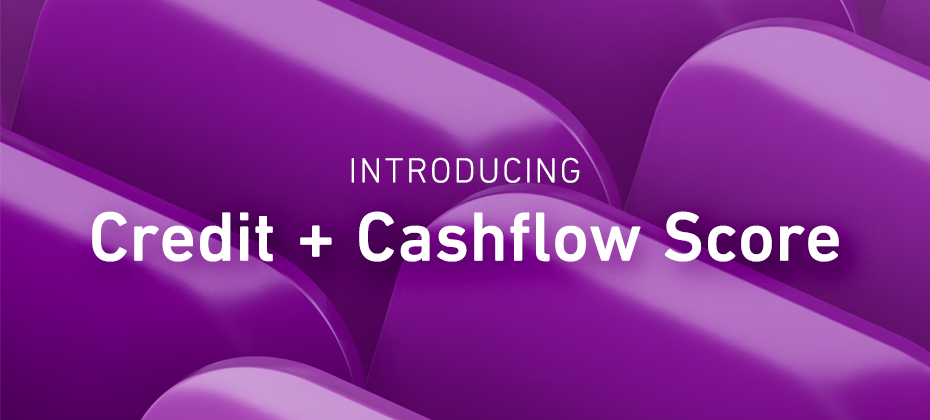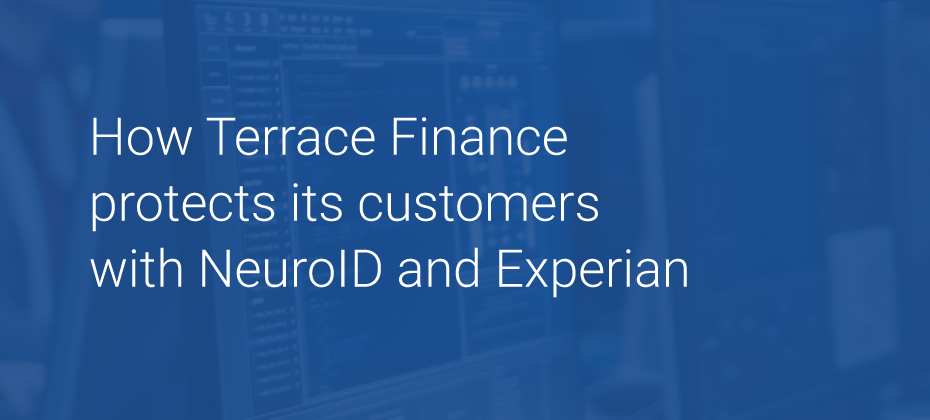Topics

The U.S. housing market is no longer waiting on the sidelines. After enduring over two years of historically high mortgage rates, the Federal Reserve began implementing rate cuts in fall 2025, with additional reductions forecast for early 2026. For lenders, this marks more than a turning point—it’s a call to action. Whether you’re targeting first-time buyers, tracking refinance-ready loans, or watching affordability trends, today’s environment demands rapid, strategic adjustments. Rate cuts are fueling renewed demand Mortgage rates, which hovered around 7% for much of the past year, have begun to ease. Even a modest drop has the potential to unlock substantial borrower interest—particularly among the 4.4 million U.S. mortgages now “ripe” for refinance. Expect a spike in both rate-and-term refinances and cash-out activity, as homeowners look to lower payments or access equity. Lenders must scale up quickly, especially around digital capacity, prescreen targeting, and streamlined closings. Affordability is still a roadblock—Especially for younger renters Despite improving borrowing conditions, affordability remains a systemic challenge. The national rent-to-income (RTI) ratio stands at 46.8%, up 7.7% since early 2023. In high-cost states like California and Massachusetts, it exceeds 56%. Experian data reveals that 62% of renters fall into the low-to-moderate income category, spending over half their income on rent. Over 50% now fall into Near Prime or Subprime credit tiers, making alternative credit data—like rental payment history—vital for inclusive underwriting. Refinance isn't the only opportunity—Target first-time buyers strategically Gen Z is now the largest segment of the rental population, and many are financially strained yet aspirational. A major opportunity exists in helping these renters transition to homeownership using expanded credit models and customized offerings. With Federal Housing Finance Agency (FHFA)-approved models like VantageScore 4.0 and FICO 10T on the horizon, lenders should explore how newer scoring frameworks and rent payment reporting can increase access to mortgage credit. Region-specific strategies are more important than ever From Miami to Minneapolis, market conditions vary drastically. Some metros, like Kansas City (+16.7%) and Louisville (+14.2%), are experiencing double-digit rent growth, while cities like Atlanta and Jacksonville are seeing declines. Lenders must tailor outreach based on local affordability trends, migration patterns, and housing supply constraints. Dynamic analytics tools—like Experian’s Ascend or Mortgage Insights Dashboard—can guide regional strategy at scale. The supply side may not keep pace Even with rate cuts stimulating demand, housing supply could remain a bottleneck. Multifamily completions are outpacing starts 1.5 to 1, and single-family construction, though recovering, remains cautious. In markets with tight supply, reduced borrowing costs may drive up prices faster than inventory can absorb, exacerbating affordability for first-time buyers. What lenders should prioritize now • Build Refinance Infrastructure: Prepare for increased volume with instant income verification tools like Experian Verify to streamline processes. • Target First-Time Buyers: Use rental history, cashflow scores, and rent-to-income metrics to assess nontraditional credit applicants fairly. • Get Granular with Geography: Align product offerings with local affordability, vacancy rates, and rent growth. • Leverage Self-Service Prescreen Tools: Act on opportunities quickly using Experian’s agile targeting platforms. • Model with New Credit Scores: Take advantage of the Experian Score Choice Bundle to test VantageScore 4.0 and FICO 2 side by side. Final Thought: The market is not rebounding—It is realigning The current housing shift is not a return to old norms—it’s the start of a redefined landscape. Lenders who act decisively, invest in technology, and prioritize inclusivity will lead the next chapter in mortgage growth. Experian is here to support you—with data, insights, and tools designed for this very moment.

In today’s fast-evolving digital landscape, fraud prevention is no longer a reactive function, it’s a strategic imperative. As financial institutions, fintechs and government agencies face increasingly sophisticated threats, the need for scalable, transparent and AI-powered solutions has never been greater. Experian stands at the forefront of this transformation, delivering proven technology, unmatched data intelligence and regulatory-ready innovation that empowers organizations to stay ahead of fraud. One platform. Every fraud challenge. Experian’s fraud prevention ecosystem delivers scale, speed and sophistication. Unlike fragmented solutions that require patchwork integrations, Experian offers a unified platform that spans the entire fraud lifecycle from identity verification to transaction monitoring and case management. With the exciting acquisition of NeuroID, Experian is delivering more value than ever before with our shared commitment to staying ahead of emerging fraud threats. Embedding NeuroID’s behavioral expertise into Experian’s data systems and platforms is transformative. Together, we’re redefining what fraud prevention can look like in a real-time, AI-driven world. – Kathleen Peters, Chief Innovation Officer, Experian With tools like NeuroID, FraudNet and Precise ID, Experian delivers real-time decisioning and orchestration across diverse use cases. These technologies are not just buzzwords, they’re battle-tested engines driving measurable impact across millions of daily decisions. Data dominance that drives accuracy Experian’s proprietary datasets and global consortia provide unparalleled access to fraud intelligence. This data advantage enables clients to detect anomalies faster, reduce false positives and optimize fraud strategies with precision. Experian supports over five billion fraud events annually across the largest banks, fintechs and government agencies. That’s 10x more fraud and identity use cases than most competitors can manage across industries and institutions of all sizes. AI innovation with guardrails While many vendors are just beginning to explore AI, Experian has spent the last two decades embedding it into its core products and services. The launch of the Experian Assistant for Model Risk Management exemplifies this commitment. Integrated into the Ascend Platform and powered by ValidMind technology, this AI assistant streamlines model governance, enhances auditability, and accelerates deployment, all while remaining compliant with evolving regulations. Experian’s AI is not a black box. It’s explainable, auditable and developed with governance in mind. This transparency gives clients the confidence to innovate without compromising compliance. Compliance is built in, not bolted on Experian’s solutions are designed with compliance at the core. From FCRA and GLBA to KYC and CIP, Experian has a long-standing track record of aligning with regulatory frameworks. The company’s ability to demystify machine learning and make it transparent and explainable sets it apart in an industry where trust is paramount. As AI adoption accelerates, Experian’s governance models ensure that innovation doesn’t outpace accountability. Clients benefit from automated documentation, synthetic data generation and model transparency which are all essential for navigating today’s complex regulatory landscape. Empowering clients to own their outcomes Experian doesn’t just deliver tools, it empowers users. With self-service model building, clients can customize fraud strategies, optimize performance, and respond to threats in real time. This flexibility ensures that organizations aren’t just reacting to fraud, they’re proactively shaping their defenses. Experian’s fraud prevention solutions are designed to be intuitive, scalable, and user-centric, enabling teams to make smarter decisions faster. A global brand you can trust Trust is earned, not claimed. Experian’s decades-long commitment to data stewardship, innovation and client success has made it a globally recognized authority in fraud prevention. With thousands of enterprise clients and strategic partnerships, Experian delivers unmatched reliability and scale. From supporting the largest financial institutions to enabling fintech startups, Experian’s infrastructure is built to manage complexity with confidence. Thought leadership that moves the industry Experian continues to lead the conversation on fraud prevention and identity verification. As a sponsor of the 2025 Federal Identity Forum & Expo, Experian showcased its latest innovations in behavioral analytics and fraud detection, helping government agencies stay ahead of evolving threats. The company’s U.S. Identity & Fraud Report, now in its tenth year, provides actionable insights into shifting fraud patterns and consumer behavior reinforcing Experian’s role as a trusted thought leader. In a market flooded with noise, Experian delivers clarity. Its unified fraud prevention platform, backed by decades of AI innovation and regulatory expertise, empowers organizations to protect their customers, optimize operations, and lead with confidence. Experian isn’t just keeping up with the future of fraud prevention, it’s defining it. Learn more

E-commerce is booming. Global online sales continue to rise with forecasts predicting growth to $7.89 trillion by 2028. Unfortunately, with any lucrative market comes fraudulent activity. As e-commerce grows by leaps and bounds, so do fraud incidents. E-commerce fraud is defined as any illegal or deceptive activity conducted during an online transaction with the intent to steal money, goods or sensitive information. As digital shopping flourishes, the tactics criminals use to exploit vulnerabilities in payment systems, customer accounts and merchant operations is rapidly expanding. According to Experian’s tenth annual Identity & Fraud Report, nearly 60% of U.S. businesses reported higher fraud losses in 2025, driven by more sophisticated attacks and legacy security gaps. The same report highlighted the damage from e-commerce fraud goes beyond the loss of revenue, directly impacting consumer trust. The survey found that only 13% of consumers feel fully secure opening new accounts. Chief amongst their concerns, 68% of consumer worry about identity theft, while 61% are fearful of stolen credit card data. The constant threat of e-commerce fraud has placed tremendous pressure on merchants and retailers to take robust steps in mitigating these attacks. In addition to protecting the bottom line, such measures are essential to earning consumer trust. According to Experian’s merchant-focused edition of our Identity & Fraud Report, consumers consistently perceive physical and behavioral biometrics tools as the most secure authentication methods — yet merchants are slow to adopt them. This gap highlights a key opportunity for businesses to strengthen security practices and build trust without adding friction to the user experience. After all, 74% of consumers say security is the most important factor when deciding to engage with a business.3 E-commerce fraud comes in many shapes and sizes E-commerce fraud is an umbrella term for a variety of attacks that target merchants and retailers. Amongst these is chargeback fraud, which occurs when a customer makes a legitimate purchase and then falsely disputes the charge with their credit card issuer, claiming the item never arrived or the transaction was unauthorized. The merchant loses both the product and the payment. Another is account takeover fraud, which happens when cybercriminals gain access to a customer’s online account, often through stolen login credentials, and use it to make unauthorized purchases, change shipping details or withdraw loyalty points. In card-not-present (CNP) fraud, attackers use stolen credit card information to make purchases online or by phone, where the physical card isn’t required. Because identity verification is limited, merchants bear the financial losses. This type of fraud includes BIN attacks, targeting the Bank Identification Number (BIN) on a credit or debit card that identifies the issuing financial institution. The goal of a BIN attack is to discover valid card numbers that can be used for fraudulent transactions. There are also refund fraud attacks, which involve scammers exploiting return or refund policies — such as claiming an item didn’t arrive or sending back a different or counterfeit product for reimbursement. Together, different forms of e-commerce fraud cost businesses billions annually, demanding strong fraud detection, authentication and monitoring systems to combat them. E-commerce fraud prevention should be a priority for every merchant and retailer. E-commerce fraud prevention: Ways merchants can fight back Merchants report the highest rates of new account fraud, yet it ranks just 15th among their active investments for 2025. While fraudsters continue to find new and innovative ways to attack, merchants and retailers can better prepare by following industry best practices in e-commerce fraud prevention: Chargeback fraud: When it comes to preventing and managing chargeback fraud, merchants should ensure customers are fully aware of return and refund policies. Utilize Address Verification Services (AVS) and Card Verification Value (CVV2) verification for online and over-the-phone transactions to establish the validity of a purchase. Keeping meticulous records of all transactions can serve as compelling evidence to defend the transaction. Leverage advanced fraud detection tools, such as tokenization and machine learning and AI fraud detection solutions that flag potentially fraudulent transactions and detect suspicious spending patterns and anomalies. Account takeover fraud: Merchants can minimize the risk of account takeover fraud using holistic, risk-based identity and device authentication, as well as behavioral analytics or targeted, knowledge-based authentication. End-to-end fraud management solutions can help reduce manual processes and remove the risk of information silos. Card-not-present fraud: Mitigating the risk of CNP fraud can be accomplished by implementing additional security measures at the time of transaction. These can include requiring verification information, such as a CVV code or a billing zip code to further authenticate the card holder’s identity. Advanced e-commerce fraud prevention tools To stay ahead of the fraudsters, merchants and retailers should take a multilayered approach to e-commerce fraud prevention that takes advantage of the latest, most advanced tools. At Experian®, we offer innovative fraud management solutions that provide the right level of security without causing customer friction. Three advanced e-commerce fraud prevention tools that every merchant should have in their arsenal include: Experian LinkTM: This tool enhances credit card authentication by linking the payment instrument with the digital identity presented for payment. Experian Link enables merchants to quickly and accurately identify legitimate customers to reduce friction and increase acceptance rates, reduce operation costs by preventing fraudulent credit card use, make better risk decisions to protect legitimate customers, limit false declines and identify potential fraudsters. Behavioral analytics: With the growth of AI, fraudsters can now replicate static data, but mimicking human behavior remains challenging. Behavioral analytics detects subtle interaction patterns that are extremely difficult for GenAI-driven fraudsters, including fraud rings and next-generation fraud bots, to replicate. Powered by NeuroID, our behavioral analytics capabilities help organizations proactively mitigate fraud, reduce false positives and streamline risk detection, ultimately creating a secure and frictionless experience for trustworthy users — while locking out fraudsters earlier. Precise ID®: This advanced tool enables businesses to pursue growth confidently by providing robust, real-time identity verification, as well as the ability to accurately identify a wide range of fraud risks including identity theft, synthetic identity and first-party fraud, along with tools that facilitate confirmation when risks are detected. The threat of fraud never stops Merchants and retailers are under a constant and unrelenting threat of attacks by fraudsters. Vigilance is required to protect the customer experience and the bottom line. Fortunately, innovative tools are leveling the playing field, offering much needed e-commerce fraud protection. To learn how Experian can help you combat fraud and meet consumers’ demands for trust and privacy, explore our best-in-class fraud management solutions and download our latest report on closing the trust gap in e-commerce. Explore our solutions Download report

Every credit decision relies on data, but traditional credit information may capture only part of a consumer’s financial story. Some of that story is reflected in credit reports, the loans repaid, the cards managed, and the steady progress toward financial goals. Others live quietly in bank statements and transaction histories, like the rent paid on time, the savings set aside, and the bills managed responsibly. Yet for millions of consumers, that second story has rarely been part of the credit conversation. Expanding the credit conversation can give lenders and financial institutions an edge, helping them separate genuine risk from missed opportunity. In a lending environment defined by volatility and evolving consumer habits, having a more complete picture of each applicant can help make the difference between sustainable growth and risk management. At the same time, open-banking frameworks and consumer-permissioned data have made it possible to understand financial health more clearly than traditional models. That’s where Experian’s Credit + Cashflow Score comes in. A unified view of credit and cash flow The Credit + Cashflow Score is the first-of-its-kind model combining multiple data sources into a single score. Based on our pre-production analytics, early results demonstrate a 40% improvement in predictive accuracy compared with conventional credit models. It unites our proprietary and industry-leading credit data, alternative credit insights, 24 months of trended behavior, and consumer-permissioned cashflow information into a single score ranging from 300 to 850.* This goes beyond cashflow-augmented models that rely primarily on transaction data layered over credit files. The result is a data-rich assessment of creditworthiness that allows lenders to strengthen portfolio performance, maintain disciplined risk management, and help identify qualified borrowers that traditional credit models might overlook. Better risk control and stronger growth Today’s lending landscape is being reshaped by rising interest rates, increased capital costs, and heightened regulatory oversight. These pressures are prompting institutions to tighten underwriting standards and reassess risk strategies as they navigate an uncertain economy. At the same time, competition for qualified borrowers continues to intensify, creating pressure to drive sustainable growth without compromising credit quality. Meanwhile, on the consumer side, people are earning income through gig work or multiple income streams and using alternative financial products. According to our recent market estimates, 62 million U.S. consumers are thin-file or credit-invisible1. This is making it harder for lenders to assess true financial capacity using credit data alone. Traditional credit scores continue to remain important, but they can potentially miss key indicators of stability and affordability that appear only in transactional data. The Credit + Cashflow Score bridges that gap, helping enable lenders to expand approvals responsibly while maintaining disciplined risk management. See what's next As credit markets continue to evolve, lenders are looking for new ways to balance growth with risk. Having the whole financial picture may allow organizations to grow stronger portfolios, reach more qualified borrowers, and bring financial opportunity to more people. Partner with Experian to leverage decades of credit expertise, the nation’s largest alternative credit bureau, and industry-leading open-banking solutions to help lenders innovate responsibly. The Credit + Cashflow Score is built to deliver measurable performance lift, model transparency, and ease of integration through the Experian Ascend Platform. Learn more about the Experian Credit + Cashflow Score * New score available in pre-production for analytics 1https://www.experian.com/thought-leadership/business/the-roi-of-alternative-data

Debt collection is rapidly evolving. Traditional methods are becoming increasingly ineffective as consumer preferences shift, regulations tighten and operational inefficiencies lead to bottlenecks.Agencies and debt buyers that rely on outdated strategies are experiencing the consequences: lower recovery rates, increased compliance risks and weaker consumer engagement. However, there’s good news — modern tools, powered by advanced data, analytics and digital platforms, are transforming these challenges into opportunities. Common collections challenges: Real-world scenarios In our latest e-book, we examine four fictional scenarios that illustrate how collections teams are addressing today’s primary challenges by updating their methods. Here’s a preview: Smarter segmentation = Higher recovery: Sally, head of collections at Midwest Debt Solutions, realized her team’s one-size-fits-all approach was costing them. By adopting advanced segmentation powered by data and analytics, she shifted her focus from chasing low-value accounts to targeting those most likely to repay, boosting recovery rates and team morale. Better data in, better decisions out: Jerry, a risk analyst at Bay & Associates, relied on a legacy credit model that overlooked crucial alternative signals. By incorporating trended credit data, utility payments and behavioral signals, his team significantly enhanced their prioritization approach and forecasting accuracy. Modern engagement for the modern consumer: John, a collections agent, was having trouble reaching consumers through traditional methods, such as phone calls and letters. With a digital self-service platform, John’s team gained real-time insight into engagement preferences and was able to connect through the channels consumers use, like SMS and email. Personalization at scale: Rachel, an account manager at Union Collections, knew manual processes were slowing her team down. By implementing personalized communications and multichannel outreach, they enhanced consumer experiences, increased repayment rates and minimized compliance risks — all while saving time. Why it matters These scenarios share a common thread: with the right tools, data and strategy, collections teams can turn today’s pain points into measurable progress. At Experian®, we help agencies: Prioritize accounts more effectively with advanced segmentation. Make smarter predictions using dynamic, modern scoring models. Streamline operations with self-service platforms and automation. Strengthen consumer relationships with personalized outreach. Download the e-book Want to dive deeper into each use case? Access the full e-book to learn how forward-thinking agencies are adapting their collections strategies to recover more, spend less and build stronger consumer relationships. Download the e-book

Why data analytics matters more to fintech lenders Unlike traditional financial institutions, fintechs grow through rapid experimentation. They build, iterate and deploy at a pace that rewards agility but often exposes gaps in visibility. That’s why unified, trusted data has become essential infrastructure. Many fintech leaders note that building technology is rarely the barrier; the real challenge is ensuring their data can move as quickly as their decisions. Analytics plays a central role in closing that gap by providing real-time insight that supports speed, accuracy and confidence. Fintech analytics goes far beyond reporting. It’s about connecting credit, cash flow and behavioral data to reveal intent, detect risk early and personalize offers. The leaders in this space aren’t those with the most data, but those who can turn it into confident, compliant action. How fintechs are using analytics to stay ahead 1. Managing risk in real timeFintech lenders are increasingly recognizing that the boundary between fraud and credit risk is disappearing. Rather than treating them as separate disciplines, leading firms are developing unified approaches that detect early behavioral signals that indicate financial stress or potential fraud well before losses occur. By fusing transactional and credit data, they are creating adaptive risk models that evolve in real time and deliver faster, more confident decisions. 2. Unlocking value from cash flow and alternative dataFintechs are finding that cash flow tells a richer story than credit alone. By layering bank transaction data on top of bureau insights, many have improved model accuracy and expanded their reach to consumers who might otherwise be overlooked. Analysis of BNPL activity, primary account behavior and income patterns is also helping lenders tailor offers with greater precision and fairness. 3. Accelerating innovation with governed AIAI is driving model development and decisioning speed, but governance remains a universal concern. Fintech leaders acknowledge the challenge of balancing innovation with regulatory transparency, emphasizing the need for faster validation, clearer audit trails and explainable outputs. The next frontier isn’t just building smarter models but ensuring those models are trusted by compliance teams, investors and consumers alike. Persistent pain points in fintech data integration For many fintechs, they are challenged by knowing, that the data exists, but the stitching between sources slows everything down. Even the most advanced fintechs face familiar challenges: Fragmented data ecosystems: Transactional, credit, and behavioral data often live across disconnected systems, creating blind spots and latency. Data quality and recency: Incomplete or outdated information weakens the accuracy of AI models. Scalability and governance: Rapid growth amplifies infrastructure strain and regulatory complexity. Where Experian gives fintechs an edge Fintechs have a need for control, speed and trust — a balance that’s difficult to achieve with point solutions or legacy integrations. That’s where Experian differentiates. The Experian Ascend Platform™ brings data, analytics and decisioning together in a single, secure environment so fintechs can: Access unified, model-ready data that combines credit, cash flow and alternative sources. Build, test, and deploy predictive models through sandbox capabilities that mirror real-world conditions. Enhance transparency and compliance with built-in AI governance and audit tools. Integrate seamlessly through flexible APIs designed for engineering-led teams. Several fintech leaders have stated that Experian’s Ascend platform’s performance and transparency help them move faster without compromising oversight, giving them the speed of an in-house build with the reliability of a proven data partner. The takeaway: from data collection to confident decisioning For fintech lenders, analytics is no longer a back-end function. It is a strategic capability that drives every decision. Those who unify their data, operationalize insights responsibly and automate decisions with transparency will set the pace for the next wave of credit innovation. Experian continues to partner with leading fintechs to transform fragmented data into real-time intelligence, powering smarter lending, sharper risk controls and stronger customer experiences built on trusted data. Discover how Experian’s fintech solutions are helping fintechs harness analytics to accelerate growth and innovation. Learn more

In today’s fast-moving financial services landscape, fintechs face a dual challenge: scaling profitably while managing increasingly complex risk. From credit underwriting to fraud prevention, every decision carries both opportunity and exposure. That’s why forward-looking fintech leaders are turning to data-driven credit risk management strategies to sharpen decision-making, enhance compliance and unlock growth. Why data-driven risk management matters in fintech Fintechs are navigating an environment shaped by rapid innovation, shifting regulations and evolving consumer expectations. Within this landscape, three challenges come to the forefront: Evolving fraud threats: Fraudsters are advancing quickly, exploiting digital onboarding and consumer data. Siloed functions: Traditionally, credit, fraud and compliance were separate, but as fraud detection becomes a higher priority, forward-looking companies are now integrating these functions, with84% planning to share more data across the industry to help prevent fraud.1 Operational complexity: Fintechs must balance growth with compliance, often with lean teams, tech-debt that demands a strong return on investment (ROI)and aggressive timelines. These challenges make it clear that static, one-dimensional risk measures are no longer sufficient. By leveraging a unified decisioning platform that incorporates behavioral data and advanced analytics, fintechs can gain a more holistic view of consumer financial behavior. This broader perspective not only improves the accuracy of credit assessments but also strengthens defenses against sophisticated fraud threats. Driving efficiency through automation A data-driven risk management strategy is only as effective as its ability to be executed at scale. This is why automation is no longer a nice-to-have, but a competitive necessity in an industry defined by speed, complexity and rising consumer expectations. By embedding automation into credit and fraud risk management processes, fintechs can create systems that are more efficient, resilient and compliant. Key advantages include: Increased underwriting efficiency: Combined with data-driven insights, automated decisioning platforms allow fintechs to evaluate applications quickly and more accurately, resulting in faster and fairer credit decisions. Portfolio growth: Leveraging expanded data and automation allow enables smarter customer segmentation and more precise risk-based pricing, driving broader market reach and greater profitability. Fraud mitigation: Automated identity verification helps fintechs quickly validate customers, reduce friction in the onboarding process and block fraudulent activity before it impacts portfolios. Regulatory readiness: Unified, automated risk processes enable fintechs to adapt quickly to regulatory shifts, fraud trends and market disruptions, building long-term sustainability. Comparing legacy and modern credit risk approaches in fintech Data and automation have become essential for executing risk strategies at scale, highlighting just how far credit risk management has evolved. Below are key differences between traditional and modern approaches to credit risk. FeatureLegacy approachData-driven approachRisk detectionPoint-in-time scoresTrajectory-based modelingFraud preventionManual reviewAutomated, behavioral analyticsComplianceSiloed functionsUnified decisioning platformCustomer experienceSlow, manualFast, fair, automated Why fintechs choose Experian® As fintechs navigate an environment of increasing regulation, fraud sophistication and consumer expectations, the winners will be those who embrace a data-driven, automated and converged approach to credit and fraud risk management. Experian offers fintechs a partner with unmatched data accuracy, robust alternative data capabilities and end-to-end decisioning solutions designed for today’s converged risk landscape, including: Trended 3DTMattributes capture 24 months of key consumer credit activity, enabling fintechs to better manage portfolio risk and determine next best actions. Cashflow Score leverages consumer-permissioned banking transaction data to predict the likelihood of a borrower going 60+ days past due in the next 12 months, providing deeper visibility into financial health and repayment capacity. PowerCurve® is a unified, automated decision engine that incorporates data, strategy design, decision automation and detailed monitoring and reporting to help fintechs streamline credit decisions with speed and consistency. Our behavioral analytics capabilities, powered by NeuroID, provide a seamless, invisible gauge of user risk, allowing fintechs to proactively mitigate fraud while creating a secure, low-friction customer experience. Frequently asked questions What is data-driven risk management in fintech? It’s the application of advanced analytics, behavioral data and automation to help fintechs improve credit risk assessment, fraud prevention and compliance in digital-first environments. How does automation help fintechs manage credit risk? Automation enables fintechs to scale efficiently by streamlining underwriting, minimizing manual errors and ensuring consistent decision-making. What are the benefits of unified decisioning platforms? Unified platforms integrate credit, fraud and compliance decisions into a single workflow, helping fintechs onboard customers faster, respond quickly to fraud threats and maintain compliance without slowing down innovation. Discover how our fintech solutions can help your fintech strengthen credit risk management, reduce fraud and accelerate growth. Learn more 1Experian Vision

Artificial intelligence (AI) is transforming industries worldwide, and financial services are no exception. One of the most impactful applications is AI credit scoring, a modern approach that uses advanced algorithms to assess consumer creditworthiness with precision, fairness and efficiency.AI credit scoring addresses traditional limitations by introducing more advanced, data-driven techniques. Instead of relying solely on static, historical data points, AI models can process vast amounts of diverse information in real time, spotting patterns and predicting behaviors more accurately. How AI is being used in credit scoring Traditional credit scoring has long relied on structured data such as payment history, credit utilization, and length of credit history. While effective, these models can be limited in capturing a holistic view of an individual’s financial behavior. AI credit scoring expands this view by: Leveraging alternative data: AI models can analyze non-traditional data sources such as rental payments, utility bills, and even digital transaction histories, providing a broader perspective for those with limited credit history. Real-time analysis: Machine learning enables lenders to evaluate applicants faster by instantly processing large amounts of data. Pattern recognition: AI systems identify subtle behavioral and financial patterns that may indicate creditworthiness beyond what traditional models can detect. Continuous learning: Unlike static scoring systems, AI-based models may improve over time as they ingest more data and refine their predictions. Using these methods, AI credit score systems create a richer, more nuanced picture of a borrower’s financial health, making lending more inclusive and predictive. The benefits of AI credit scoring The adoption of AI in credit scoring has created significant benefits for lenders, regulators, and consumers alike: Improved accuracy: AI models draw on a broader range of data, reducing reliance on limited or outdated metrics. Financial inclusion: Millions of consumers globally remain outside the traditional credit system. AI credit scoring allows lenders to evaluate previously overlooked applicants, such as young adults, recent immigrants, or gig economy workers. By factoring in alternative data, lenders can serve historically underserved individuals. Faster and more efficient processes: AI can automate large portions of the decision-making workflow, significantly reducing the time it takes to approve applications. This means faster access to credit for consumers and reduced operational costs for lenders. Fraud detection and risk mitigation: Advanced machine learning models can detect anomalies in borrower behavior that may indicate fraud or identity theft. By flagging these risks earlier, lenders protect both themselves and their customers. Enhanced customer experience: AI-driven insights help lenders design more personalized products and repayment plans. Institutions can better understand customer needs and financial behaviors by offering tailored solutions that improve loyalty and trust. Challenges of AI in credit scoring While the promise of AI is transformative, it also brings new challenges that financial institutions must navigate carefully. Bias and fairness: AI models may inadvertently replicate biases in training data, raising concerns about fairness and equity. Transparency: Complex algorithms can be challenging to explain to regulators, lenders, and consumers, creating a "black box" perception. Data privacy: Using alternative data for credit scoring requires strict compliance with privacy regulations and consumer consent. Regulatory alignment: As AI evolves, credit scoring must comply with evolving financial and consumer protection laws. Why partner with us At Experian®, we understand that trust, accuracy, and transparency are essential in the financial ecosystem. By combining decades of expertise in credit data with AI solutions, we deliver AI credit score solutions that empower lenders to make smarter, fairer, and faster decisions. With us as your trusted partner, you can embrace AI-powered credit solutions confidently and responsibly. Global data expertise: We leverage one of the world’s most comprehensive credit databases, ensuring high-quality insights. Responsible AI: Our solutions are built with fairness, transparency, and regulatory compliance at the forefront. Proven results: We partner with financial institutions worldwide to unlock opportunities for lenders and consumers through AI-driven insights. Commitment to inclusion: Our AI credit scoring tools are designed to expand financial access for underserved communities. The rise of AI credit scoring marks a new era in financial services, where accuracy, speed, and inclusivity converge to benefit lenders and consumers alike. While challenges remain, responsible use of AI ensures that credit scoring becomes more transparent, fair, and effective. Learn more

As fraud continues to rise in the rental housing market, tenant screening practices are evolving. In an earlier blog, I explored how Experian Observed DataTM can provide early indicators of income and employment consistency, offering screening companies a way to reduce reliance on costly or time-intensive verification methods. In this follow-up, I explore two additional tools that strengthen the tenant screening process: Experian VerifyTM for Research Verifications and Experian Verify for Permissioned Verification's AI-powered Document Review. Used together, these solutions enable a layered approach that boosts both efficiency and prevention of fraud. Modernized Research Verifications Manual employment and income and employment checks—once the standard for tenant screening—are time-consuming and often inconsistent. Traditionally, screening companies had to reach out directly to employers and request proof of employment. While still useful, this method puts pressure on internal resources and is not always scalable. To streamline manual verification, many organizations are partnering with third-party providers, especially those that take a digital-first approach. Outsourcing allows screening companies to delegate outreach, follow-ups, and fraud detection to specialized teams trained in document validation and employer communication. These services deliver the same insights internal teams would gather, while freeing up in-house resources for more strategic initiatives. By leveraging digital tools such as conversational AI, online forms, and automated workflows—combined with human oversight—digital-first vendors offer a more scalable and cost-effective alternative to fully manual processes. This approach not only reduces operational costs but also shortens turnaround times, helping screening companies respond faster without compromising accuracy or fraud resistance. Key advantages:[MJ1] Reduces the burden on internal staff Ensures consistency and fraud awareness in document review Provides a reliable fallback when other verification tools return limited data This approach is especially valuable when initial data sources yield incomplete results and further confirmation is required. AI-Enhanced Document Upload and Review Another common scenario in tenant screening is the submission of income documents by the applicant, often in the form of paystubs or bank statements. Manual review of these documents is prone to error and increasingly vulnerable to sophisticated forgeries, including those generated by artificial intelligence. AI-powered document analysis tools are now helping screening companies process uploaded documents more securely and efficiently. These platforms typically work by: Allowing applicants to upload documents through a secure portal Using AI to scan for signs of tampering, fabrication, or inconsistency Returning standardized results that are easier to evaluate and compare By automating the detection of anomalies and potential fraud indicators, these tools reduce the workload for staff while improving the reliability of the review process. Benefits include: Faster review and turnaround times Improved fraud detection capabilities Greater consistency across applicants This method is especially useful when traditional employer APIs are unavailable or when screening companies need additional confirmation beyond initial data sources. A Layered Approach to Verification By combining different verification methods, screening companies can design workflows that adapt to a wide range of applicant profiles and risk scenarios. A layered strategy might include: Starting with an inexpensive source of income or employment data to identify likely matches Using AI-based document review when additional validation is needed Turning to manual research verifications only when necessary This cascading process allows screening companies to control costs while maintaining a strong defense against fraud. It also ensures that higher-cost methods are used only when the earlier steps do not provide enough confidence to proceed. Modern Challenges Require Modern Solutions Fraud in tenant screening is increasing rapidly. According to industry surveys, over 93 percent of screening companies have encountered fraud in the past year, and the majority have dealt with falsified income documentation. Traditional approaches, especially manual review, are no longer sufficient on their own. By rethinking verification strategies and incorporating modern tools like outsourced research verification and AI-enhanced document review, screening companies can reduce risk, improve efficiency, and better prioritize their resources. Learn More For organizations interested in implementing these types of verification tools, several providers—including Experian—offer services designed to support this layered approach. These solutions can help screening companies strike the right balance between cost, compliance, and fraud resistance. To learn more, visit experian.com/verify.

In today’s digital lending landscape, fraudsters are more sophisticated, coordinated, and relentless than ever. For companies like Terrace Finance — a specialty finance platform connecting over 5,000 merchants, consumers, and lenders — effectively staying ahead of these threats is a major competitive advantage. That is why Terrace Finance partnered with NeuroID, a part of Experian, to bring behavioral analytics into their fraud prevention strategy. It has given Terrace’s team a proactive, real-time defense that is transforming how they detect and respond to attacks — potentially stopping fraud before it ever reaches their lending partners. The challenge: Sophisticated fraud in a high-stakes ecosystem Terrace Finance operates in a complex environment, offering financing across a wide range of industries and credit profiles. With applications flowing in from countless channels, the risk of fraud is ever-present. A single fraudulent transaction can damage lender relationships or even cut off financing access for entire merchant groups. According to CEO Andy Hopkins, protecting its partners is a top priority for Terrace:“We know that each individual fraud attack can be very costly for merchants, and some merchants will get shut off from their lending partners because fraud was let through ... It is necessary in this business to keep fraud at a tolerable level, with the ultimate goal to eliminate it entirely.” Prior to NeuroID, Terrace was confident in its ability to validate submitted data. But with concerns about GenAI-powered fraud growing, including the threat of next-generation fraud bots, Terrace sought out a solution that could provide visibility into how data was being entered and detect risk before applications are submitted. The solution: Behavioral analytics from NeuroID via Experian After integrating NeuroID through Experian’s orchestration platform, Terrace gained access to real-time behavioral signals that detected fraud before data was even submitted. Just hours after Terrace turned NeuroID on, behavioral signals revealed a major attack in progress — NeuroID enabled Terrace to respond faster than ever and reduce risk immediately. “Going live was my most nerve-wracking day. We knew we would see data that we have never seen before and sure enough, we were right in the middle of an attack,” Hopkins said. “We thought the fraud was a little more generic and a little more spread out. What we found was much more coordinated activities, but this also meant we could bring more surgical solutions to the problem instead of broad strokes.” Terrace has seen significant results with NeuroID in place, including: Together, NeuroID and Experian enabled Terrace to build a layered, intelligent fraud defense that adapts in real time. A partnership built on innovation Terrace Finance’s success is a testament to what is possible when forward-thinking companies partner with innovative technology providers. With Experian’s fraud analytics and NeuroID’s behavioral intelligence, they have built a fraud prevention strategy that is proactive, precise, and scalable. And they are not stopping there. Terrace is now working with Experian to explore additional tools and insights across the ecosystem, continuing to refine their fraud defenses and deliver the best possible experience for genuine users. “We use the analogy of a stream,” Hopkins explained. “Rocks block the flow, and as you remove them, it flows better. But that means smaller rocks are now exposed. We can repeat these improvements until the water flows smoothly.” Learn more about Terrace Finance and NeuroID Want more of the story? Read the full case study to explore how behavioral analytics provided immediate and long-term value to Terrace Finance’s innovative fraud prevention strategy. Read case study

In the latest episode of “The Chrisman Commentary” podcast, Experian's Alison Bird, Product Owner, and Joy Mina, Director, Product Commercialization, discuss how streamlining the verification process helps mortgage lenders serve more borrowers without sacrificing accuracy. Listen to the full episode for all the details and tune in to the previous episode to learn why price transparency is important in the verification process. Listen now

In today’s digital payments landscape, fraudsters are constantly developing new tactics to exploit vulnerabilities. One of the most common credit card schemes financial institutions and merchants face are BIN attacks. But what exactly is a BIN attack, and how does BIN attack fraud work? What is a BIN attack? BIN attacks, a type of card not present fraud, target the Bank Identification Number (BIN) — the first six to eight digits of a credit or debit card number that identify the issuing financial institution. Fraudsters use these digits to systematically generate and test potential card number combinations. The goal of a BIN attack is to discover valid card numbers that can be used for fraudulent transactions. Because BINs are publicly available and consistent across card issuers, they provide a predictable framework for attackers. How does it differ from other types of payment fraud? Payment fraud takes many forms, but BIN attacks stand apart because of their scale and automation. Card testing fraud vs. BIN attacks: Both involve criminals running authorization attempts to identify valid card details. However, card testing typically uses data from a single stolen card, while BIN attacks systematically generate thousands of possible card numbers from a known BIN range. Account takeover fraud vs. BIN attacks: In an account takeover, fraudsters gain access to a customer’s existing account, often through phishing or stolen login credentials. BIN attacks don’t require account access — instead, they exploit card number patterns to guess valid accounts. What are the consequences of a BIN attack? BIN attacks don’t just result in stolen card numbers — they create wide-ranging business risks that can impact operations, revenue and customer trust. For financial institutions and merchants, the ripple effects can be significant: High transaction volumes: BIN attacks are carried out using automated scripts or bots that fire off thousands of transaction attempts per minute. This traffic can overwhelm payment systems, slow down processing and disrupt the checkout experience for legitimate customers. Increased chargebacks: Once fraudsters identify valid cards, they make unauthorized purchases that often result in chargebacks. Both merchants and issuers absorb these losses — merchants lose revenue, while issuers reimburse cardholders. Network and processing costs: Every transaction attempt — even those declined during a BIN attack — still incurs network and processing fees. Merchants and issuers can end up paying for thousands of authorization requests, draining resources. Reputational damage: Today’s consumers expect seamless and secure payments. If they experience frequent declines, blocked cards or fraudulent activity, their trust in the institution or merchant erodes. How to protect against BIN attack fraud Mitigating BIN attacks requires a proactive, layered defense strategy. Financial institutions and merchants should consider: Advanced fraud detection and analytics: BIN attacks generate massive volumes of fraudulent traffic. By leveraging AI-driven analytics and machine learning, institutions and merchants can monitor for unusual transaction patterns, velocity spikes and bot-driven activity. Identity and device intelligence: Fraudsters often hide behind bots, stolen IP addresses and compromised devices. With identity verification and device intelligence solutions, merchants and institutions can better determine whether a transaction is coming from a legitimate customer or a fraudster testing card details. Multi-factor authentication (MFA): BIN attacks succeed on speed and automation, firing off thousands of transactions. MFA can help disrupt this process by requiring additional proof of identity from the customer, such as facial recognition or one-time passcodes. Credit card authentication: BIN attacks exploit the gap between payment credentials and the identity of the person using them. A solution like Experian LinkTM seamlessly connects the payment instrument with the digital identity presented for payment, helping merchants to reduce false declines, fraud and operating expenses. Build a stronger defense against BIN attacks BIN attacks are a growing threat in today’s digital payments ecosystem. But with the right safeguards in place, organizations can stay ahead. Learn how Experian can help you strengthen your fraud defenses to reduce losses and protect customer trust. Learn more

Mid-sized banks are large enough to pursue ambitious growth strategies, like expanding loan portfolios or entering new markets, but not so large that they can withstand major credit losses without consequence. So how do lending organizations manage their credit risk strategies to grow without taking on more risk than they can handle?

Nearly 19 million U.S. households remain unbanked or credit-invisible,1 not due to a lack of financial responsibility but because traditional credit models alone may not include key financial behaviors. These individuals often save, earn and budget wisely, yet conventional scoring systems do not recognize them. We’ve recently partnered with Plaid, the trusted leader in open finance, to change that. Together, we’re putting cash flow underwriting front and center — giving lenders access to real-time, consumer-permissioned financial data that paints a fuller, more accurate picture of creditworthiness. Why cash flow data matters now In the U.S., many consumers with limited credit histories want to build their profiles but don’t know how. Cash flow underwriting bridges this gap. Cash flow insights reveal real-world financial activity — like income patterns, spending habits and account balances — in real time. This empowers lenders to make smarter, faster and more inclusive credit decisions, while helping consumers gain access to the financial services they deserve. What cash flow insights deliver By incorporating cashflow data into your decisioning strategy, you can: See beyond the score with a richer view of a consumer’s financial health. Accelerate approvals with more accurate and timely insights. Expand access to credit while strengthening portfolio diversity and reducing risk. Download our infographic to see how cash flow underwriting is reshaping lending — and how you can lead the change. Download infographic 1Mullen, C. (2024, November 13). Underbanked US population grows to 14.2%, FDIC finds. Banking Dive.

Credit decisioning has traditionally relied on static data like credit bureau scores, income statements, and past repayment history. As financial behavior becomes more dynamic and consumer expectations shift toward instant decisions, real-time data is emerging as a powerful tool in reshaping how lenders assess risk.